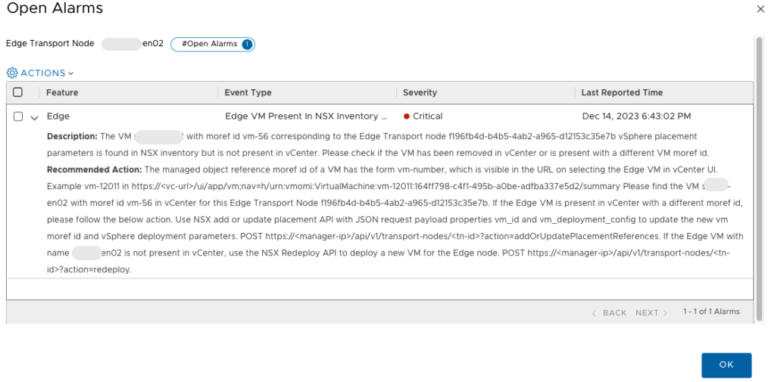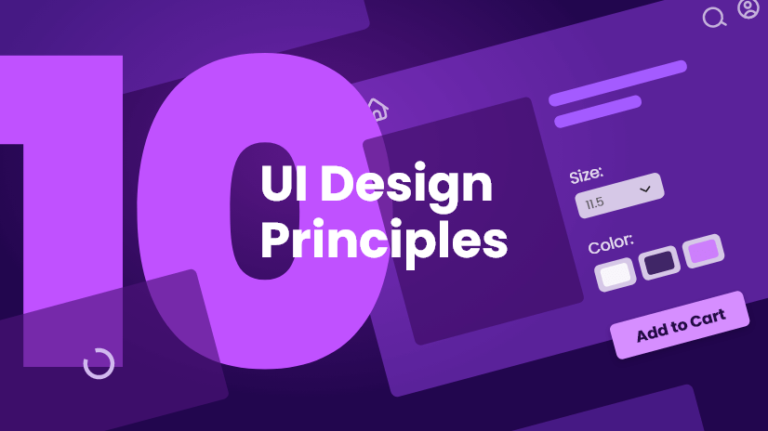Are you looking to enhance your project management skills and increase efficiency in your organization?
Understanding Agile and Scrum methodologies could be the key to achieving success.
In this article, we will explore the key principles of Agile and Scrum, discuss the differences between the two, and highlight the benefits of implementing these methodologies.
We will also provide practical tips on how to effectively implement Agile and Scrum in your organization.
So, grab a cup of coffee and let’s dive into the world of Agile and Scrum!
Key Takeaways:
What Are Agile and Scrum Methodologies?
Agile and Scrum methodologies are prominent approaches in project management and software development.
Agile methodology emphasizes flexibility, adaptability, and continuous improvement throughout the project lifecycle. It encourages collaboration among team members and stakeholders, promoting transparency and clear communication.
Scrum, on the other hand, is a specific framework under the Agile umbrella that follows an iterative approach with defined roles, events, and artifacts. Scrum provides a structured way for teams to work together, delivering incremental value in short iterations known as sprints.
Both Agile and Scrum methodologies have revolutionized software development by enabling teams to respond swiftly to changing requirements and deliver high-quality products efficiently. By promoting teamwork, self-organization, and regular feedback loops, these methodologies drive innovation and customer satisfaction.
What Are the Key Principles of Agile and Scrum?
The key principles of Agile and Scrum encompass iterative development, collaboration, flexibility, and continuous improvement, rooted in the Agile Manifesto.
Iterative development in Agile and Scrum emphasizes breaking down work into smaller increments, allowing for quick feedback and adjustments. Collaboration plays a crucial role in fostering cross-functional teams that work together towards a shared goal, ensuring transparency and collective ownership.
Flexibility within these methodologies enables teams to adapt to changes efficiently, respond to customer needs, and embrace evolving requirements. The core value of continuous improvement drives teams to regularly reflect on their processes, identify areas for enhancement, and implement adjustments to optimize their workflow.
Iterative and Incremental Development
Iterative and incremental development in Agile and Scrum methodologies involves breaking down projects into manageable segments, known as sprints, to deliver value incrementally.
This approach allows teams to focus on completing specific tasks within a defined timeframe, promoting collaboration and ensuring frequent delivery of working components. By using Agile frameworks, such as Kanban and Lean, project teams can streamline workflows and adapt to changing requirements efficiently.
Through project segmentation and continuous feedback loops, organizations can enhance product quality and respond swiftly to customer needs, fostering a culture of continuous improvement. This iterative cycle of planning, executing, and reviewing enables teams to prioritize features effectively and deliver tangible results in a timely manner.
Collaboration and Communication
Collaboration and communication are core principles in Agile and Scrum methodologies, fostering strong teamwork, stakeholder involvement, and effective information exchange.
In Agile and Scrum practices, teamwork plays a crucial role in driving project success by leveraging the collective expertise and skills of individuals. Through collaboration, team members combine their unique strengths to achieve shared goals and deliver high-quality outcomes. This synergy is further enhanced by active stakeholder engagement, where project sponsors, end-users, and other involved parties contribute valuable insights and feedback throughout the development process.
Flexibility and Adaptability
Flexibility and adaptability are key tenets of Agile and Scrum, allowing teams to respond to changing requirements, integrate feedback, and adjust project scopes as needed.
Within Agile methodologies, flexibility refers to the team’s ability to embrace changes at any stage of a project, whether it be altering priorities, adding new features, or even modifying the project’s end goal.
On the other hand, adaptability in the Scrum framework implies being open to shifting project objectives based on the ever-changing needs and insights acquired throughout the development process.
This dynamic approach not only fosters continuous improvement but also ensures that the final product aligns closely with the stakeholders’ evolving expectations.
Continuous Improvement
Continuous improvement is a core principle of Agile and Scrum, emphasizing the iterative enhancement of processes, products, and team performance to promote lasting success.
Embracing continuous improvement within Agile and Scrum methodologies involves a commitment to ongoing reflection, adaptation, and evolution. It encourages teams to regularly assess their practices, gather feedback, and implement adjustments to optimize their workflow. By prioritizing constant learning and adjustment, organizations can foster a culture of innovation and responsiveness.
One of the key benefits of this approach is the ability to detect and address inefficiencies or bottlenecks early on, preventing them from escalating and impeding productivity. It also enables teams to adapt to changing requirements and market conditions swiftly, enhancing their agility and competitiveness.
Nevertheless, the pursuit of continuous improvement is not without challenges. It requires a mindset shift towards embracing change and experimentation, which can be daunting for some individuals and teams. Maintaining the discipline and focus needed to consistently refine practices and processes amidst project pressures can be a significant hurdle to overcome.
What is the Difference Between Agile and Scrum?
Understanding the difference between Agile and Scrum is crucial as Agile represents a philosophy while Scrum is a structured framework within the Agile methodology spectrum.
Agile is characterized by its values and principles that prioritize customer satisfaction, continuous improvement, flexibility, and collaboration. On the other hand, Scrum is a specific implementation of Agile that provides a set of predefined roles, ceremonies, and artifacts. While both Agile and Scrum aim to deliver high-quality products incrementally, Agile is more adaptable and allows for iterative changes based on feedback, whereas Scrum follows a more rigid structure with fixed sprint durations and specific roles like Scrum Master, Product Owner, and Development Team.
Agile is a Philosophy, Scrum is a Framework
Agile is fundamentally a philosophy that promotes adaptive planning, evolutionary development, and continuous improvement, while Scrum provides a structured framework with defined roles, events, and artifacts.
In Agile, the emphasis is on responding to change over following a strict plan, allowing teams to embrace uncertainty and iterate frequently to deliver value early. Scrum, on the other hand, follows a more prescriptive approach with fixed roles like Product Owner, Scrum Master, and Development Team, as well as events such as Sprint Planning, Daily Stand-ups, and Sprint Reviews.
The core principles of Agile revolve around customer collaboration, working products, and the ability to respond to change, fostering a flexible and transparent work environment. In contrast, Scrum is characterized by its commitment to time-boxed iterations known as Sprints, emphasizing regular inspection and adaptation through ceremonies like Sprint Retrospective.
Agile is Iterative, Scrum is Incremental
Agile methodologies emphasize incremental delivery of value through iterative cycles, while Scrum focuses on delivering potentially shippable increments in short development cycles known as sprints.
Within the Agile framework, iterative cycles enable teams to continuously refine and enhance the product based on frequent feedback loops, ensuring that it evolves in sync with changing requirements and stakeholder needs. This iterative nature allows for flexibility and adaptability throughout the development process, fostering collaboration and transparency within the team. On the other hand, Scrum’s sprint-based approach sets specific timeframes for delivering functional increments, creating a sense of urgency and focus on achieving predefined goals within each sprint.
Agile Focuses on Individuals and Interactions, Scrum Focuses on Processes and Tools
Agile methodologies prioritize individuals and interactions over processes and tools, fostering a people-centric approach, while Scrum places emphasis on defined roles, structured meetings, and efficient processes.
Agile, with its focus on open communication, flexible responses to change, and a self-organizing team structure, values collaboration and adaptability as key principles.
Team dynamics play a crucial role in Agile, where team members share responsibilities, make decisions collectively, and continuously interact to deliver high-quality products.
On the other hand, Scrum defines clear roles like the Product Owner, Scrum Master, and Development Team, each with specific responsibilities and accountabilities, ensuring a streamlined workflow.
Agile is Adaptive, Scrum is Prescriptive
Agile methodologies exhibit adaptability by responding to changing customer needs and requirements flexibly, whereas Scrum provides a more prescriptive framework that defines specific roles, ceremonies, and artifacts to guide teamwork.
Agile, often seen as a more flexible and dynamic approach, emphasizes continuous improvement and collaboration throughout the development process. Scrum, on the other hand, introduces a structured set of rules and practices, including daily stand-up meetings, sprint planning sessions, and sprint reviews, aiming for a well-defined and predictable workflow.
What Are the Benefits of Using Agile and Scrum?
Utilizing Agile and Scrum methodologies can lead to increased efficiency, improved quality, enhanced customer satisfaction, and better team collaboration in software development projects.
One of the key advantages of Agile is its emphasis on faster time-to-market. By breaking down projects into smaller, manageable increments known as sprints, teams can deliver valuable features more frequently, keeping up with rapidly changing market demands.
Incorporating Scrum principles like regular sprint planning sessions ensures that the team stays focused on the most important tasks, adapting to new requirements swiftly. This iterative development approach leads to early detection of issues, enabling quick adjustments for enhanced productivity and minimized risks.
The active involvement of stakeholders throughout each sprint facilitates continuous feedback, fostering superior customer satisfaction and aligning deliverables with business goals. This collaborative framework not only enhances the final product but also strengthens the working relationship between teams and clients.”
Increased Efficiency and Productivity
Implementing Agile and Scrum practices can enhance project efficiency and productivity by promoting adaptive planning, iterative development, and streamlined communication.
With Agile, teams can quickly respond to changes, ensuring that the project remains aligned with evolving requirements. The iterative nature of Scrum allows for regular checkpoints and feedback loops, enabling adjustments to be made promptly to optimize outcomes. Through daily stand-up meetings, team members stay informed about progress and challenges, fostering collaboration and problem-solving in real-time. By fostering a culture of transparency and continuous improvement, Agile methodologies give the power to teams to deliver high-quality results efficiently and with enhanced customer satisfaction.
Improved Quality and Customer Satisfaction
Agile and Scrum methodologies contribute to enhanced product quality and increased customer satisfaction by fostering continuous feedback loops, stakeholder involvement, and iterative development cycles.
These methodologies prioritize customer satisfaction by involving customers in the development process through regular feedback sessions, ensuring that the end product meets their evolving needs. With Agile’s focus on adaptability and Scrum’s structured framework, teams can quickly respond to changing requirements and market dynamics, resulting in products that are more aligned with customer expectations.
The iterative nature of Agile and Scrum encourages continuous improvement, allowing teams to incrementally enhance product features based on feedback received from stakeholders and end-users. This not only boosts product quality but also increases customer satisfaction by delivering value in smaller, more frequent increments.
Better Team Collaboration and Communication
Adopting Agile and Scrum methodologies fosters better team collaboration and communication, leading to increased transparency, shared understanding, and improved decision-making processes.
One of the key aspects of Agile and Scrum is their emphasis on daily stand-up meetings, where team members discuss progress, challenges, and potential roadblocks.
These short, focused meetings allow for quick problem-solving, alignment on shared goals, and continuous improvement.
The iterative nature of Agile sprints encourages regular feedback loops, enabling teams to adapt quickly to changing requirements and deliver value incrementally.
Faster Time-to-Market
Agile and Scrum methodologies facilitate faster time-to-market by enabling rapid iterations, incorporating feedback promptly, and adapting development processes based on changing market demands.
One of the key advantages of Agile and Scrum is the emphasis on collaboration amongst cross-functional teams, fostering communication, and transparency essential for swift decision-making. By breaking down projects into manageable tasks through sprints, teams deliver incremental value at the end of each iteration, allowing for early and continuous customer feedback.
The iterative nature of Agile and Scrum enables teams to swiftly adjust priorities, respond to market fluctuations, and pivot strategies when necessary. This flexibility ensures that the final product aligns closely with customer expectations, enhancing customer satisfaction and loyalty.”
How to Implement Agile and Scrum in Your Organization?
To successfully implement Agile and Scrum in your organization, it is essential to define the project scope, establish clear goals, and lay the foundation for effective Agile practices.
Defining the project scope involves identifying the objectives, deliverables, and boundaries of the project, ensuring a shared understanding among all stakeholders. This clarity helps prioritize tasks and allocate resources efficiently.
Once the scope is set, creating actionable goals becomes crucial to outline measurable outcomes that align with the project’s vision.
Planning sprints involves breaking down the project into manageable phases, each with its specific goals and tasks, promoting incremental progress.
Fostering a culture of adaptability within the team encourages continuous improvement and flexibility in responding to changing project requirements.
Define the Scope and Goals of the Project
Initiate Agile and Scrum implementation by clearly defining the project scope, outlining specific goals, and aligning stakeholder expectations with project requirements.
One of the initial steps in Agile and Scrum adoption is to meticulously identify the project requirements, ensuring that the scope is well-understood by all team members. Setting achievable goals plays a crucial role in steering the project towards success. It is imperative to involve stakeholders early on in the process to align their expectations with the deliverables. By engaging stakeholders proactively, teams can gain valuable insights and perspectives that enhance the project planning phase.
Create a Product Backlog
Develop a product backlog as a crucial component of Agile and Scrum implementation, prioritizing project requirements, user stories, and sprint planning for iterative delivery.
A product backlog serves as a dynamic tool that captures and prioritizes all work needed for a project, ensuring that the team is aligned on what needs to be done next. By continuously refining and updating the backlog, the team can respond to changing requirements and market trends efficiently.
Prioritizing user stories within the backlog allows the team to focus on delivering high-value features early, maximizing stakeholder satisfaction. The practice of sprint planning, influenced by the backlog, helps teams establish clear goals for each sprint, fostering a rhythmic and productive development pace.
Plan and Execute Sprints
Plan and execute sprints as part of the Agile and Scrum process, ensuring iterative development, regular feedback loops, and continuous improvement throughout project cycles.
In Agile and Scrum methodologies, sprint planning is a crucial phase where the team collaboratively decides on the work to be accomplished during the sprint.
- This involves selecting user stories from the product backlog and breaking them down into smaller tasks.
- Feedback from stakeholders and team members is integrated into the plan to ensure alignment with project goals.
- Once the plan is finalized, the team commits to completing the tasks within the sprint duration, usually 2-4 weeks.
During the sprint execution phase, the team works on the selected tasks daily, holding short stand-up meetings to discuss progress, challenges, and any adjustments needed.
Hold Regular Retrospectives and Adapt as Needed
Conduct regular retrospectives to review project progress, identify areas for improvement, and adapt Agile and Scrum practices as needed to optimize team performance and project outcomes.
In Agile and Scrum methodologies, retrospectives play a crucial role in fostering a culture of continuous learning and improvement. By creating a dedicated space for team reflection, retrospectives enable members to openly discuss what worked well, what didn’t, and how processes can be refined for future sprints. This iterative approach not only enhances communication and collaboration but also give the power tos teams to make data-driven decisions, leading to more efficient workflows and better outcomes. Embracing the retrospective meetings allows for adaptive planning, where teams can respond swiftly to changes, iterate on strategies, and maintain a competitive edge in today’s dynamic business landscapes.
Frequently Asked Questions
What are the key differences between Agile and Scrum methodologies?
Agile and Scrum are both popular software development methodologies, but there are some key differences that set them apart. Agile is a broader approach that focuses on flexibility and adaptability, while Scrum is a specific framework within the Agile methodology. Scrum follows a set of roles, events, and artifacts to help teams deliver high-quality products in a more streamlined way.
How does Scrum help teams improve their productivity?
Scrum is designed to help teams work more efficiently and effectively. By breaking down the development process into smaller, manageable chunks called sprints, Scrum allows teams to focus on delivering working products in a shorter amount of time. This promotes better teamwork, communication, and collaboration, ultimately leading to improved productivity.
Can Agile and Scrum methodologies be used in non-software development projects?
While Agile and Scrum were originally developed for software development, their principles and practices can be applied to a variety of projects in different industries. The core values of Agile, such as continuous improvement and adaptability, can benefit any project that requires flexibility and a focus on delivering value to stakeholders. Scrum, in particular, has been successfully used in fields such as marketing, construction, and healthcare.
What are the roles in a Scrum team and what are their responsibilities?
A Scrum team consists of three key roles: the Product Owner, Scrum Master, and Development Team. The Product Owner is responsible for defining and prioritizing the product backlog, the Scrum Master facilitates the Scrum process and removes any obstacles, and the Development Team is responsible for delivering the product increment at the end of each sprint. These roles work together closely to ensure a successful project delivery.
How does Agile and Scrum promote continuous improvement?
One of the core values of Agile is continuous improvement, which is also known as “inspect and adapt.” This means that teams regularly reflect on their processes, identify areas for improvement, and make necessary changes to deliver better products. Scrum supports this by including retrospective meetings at the end of each sprint, where the team discusses what went well, what didn’t, and how to improve moving forward.
What are the main advantages of using Agile and Scrum methodologies?
Agile and Scrum have several benefits that make them popular among development teams. These include quicker delivery of working products, higher customer satisfaction, increased flexibility to adapt to changing requirements, and improved collaboration and communication within the team. Additionally, the iterative nature of Agile and Scrum allows for continuous improvement, leading to higher-quality products and a more efficient development process.




